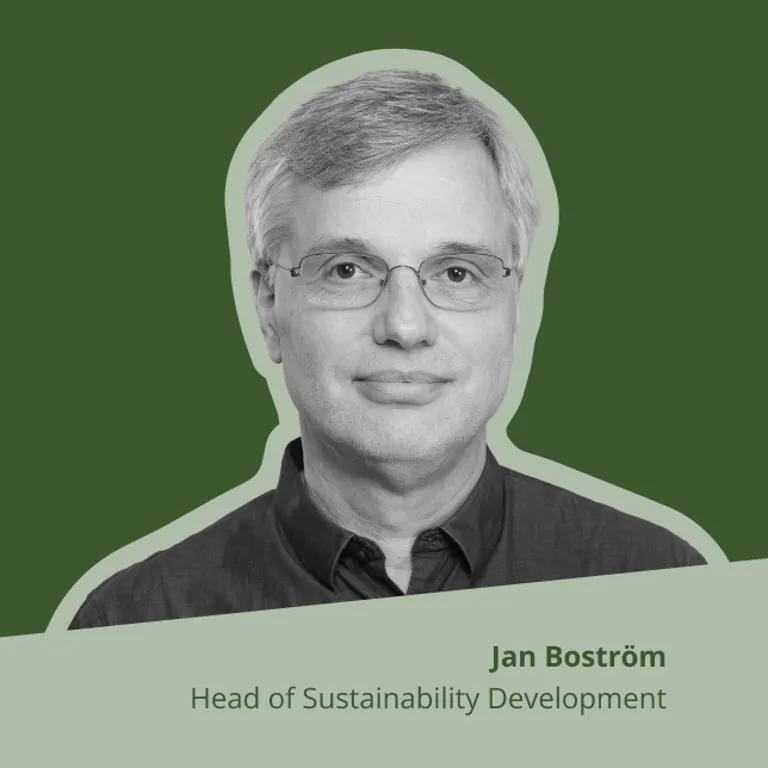Tougher building requirements? No problem!
Everyone in the industry most likely agrees that the requirements for construction projects have increased significantly in recent years.

It is no longer enough to construct a good building. In particular, requirements have increased with regard to building materials, environmental performance, reporting and functionality. These requirements are of course essentially good, because we want to make buildings as good as possible for their occupants and for the environment in general, but they also involve a lot of extra work. So how can we make it easy to do things right and achieve multiple benefits all from one solution?
To look more closely at the rhetorical questions asked in the introduction here, I would like to start by giving some examples of how the construction process in the Nordic countries has become more complex in recent years. In Sweden, the requirement for climate declarations for new buildings was introduced in 2022 and now also exists in Norway and Denmark, and will soon apply in Finland. The number of projects that have to be certified in accordance with one of the various certification schemes on the market, such as BREEAM, DGNB, Miljöbyggnad, Nordic Swan or LEED, is also constantly increasing. More recently, stricter reporting requirements have been introduced in relation to the EU Taxonomy.
This of course requires more knowledge, and if one looks just at the building materials used, there are a number of new requirements:
- Construction materials have to be checked to ensure they fulfil the requirements defined in the relevant certification.
- Construction materials have to be checked to ensure they fulfil the DNSH requirements of the EU Taxonomy.
- The CO₂eq footprint of building materials has to be calculated, for use in the climate declaration.
- The building materials used will be logged, partly to enable verification of the various requirements and partly to facilitate their future reuse, thus reducing future resource consumption and the CO₂eq footprint.
The process of using construction materials in a project can be described in simple terms as follows:
1. Product selection – Each product used must be checked against the requirements of the chosen certification and also against the requirements of the EU Taxonomy. The person doing this should have a good understanding of the respective rules and will need detailed documentation, such as safety data sheets, construction product declarations and emission certificates from product manufacturers, etc. Only then can the person assess whether the products comply with the specified requirements.
Alternatively, partial responsibility can be delegated to the various manufacturers, by asking them to declare if there is compliance. However, this means that one does not have the detailed information about the products that in some cases is needed for certification of the building, and which is always key for enabling safe future reuse of the products. The process requires a great deal of internal communication as it is usually different people who have the knowledge about what is needed and what works in the building and who know how a product compares to the environmental requirements.
2. Product registration – Once a product has been approved subject to point 1, it can be used. Then it needs to be logged, preferably together with information about where and in what quantities it is used. This is to facilitate any future replacement and/or reuse of the product and as part of the documentation for the certification and climate declaration.
3. Reporting – Lastly, the documentation for the certification, the declaration of compliance with the EU Taxonomy and the climate declaration needs to be put together. Hopefully, all the relevant information has been gathered together during steps 1 and 2, but some additional information is usually needed, such as searching for more EPDs, or supplementing with authorised generic data if the EPDs do not exist.
Given that the above has to be done for the vast majority of products in a building, it involves a lot of work, most of which is manual. As a result, it is unfortunately common that “doing it right” is more expensive, not necessarily because the technical solution or building products are more expensive, but because the associated process is so complex and resource-intensive.
Although the requirements were not quite as complex when we introduced SundaHus Environmental Data in 2003, one of our basic ideas with that was to make it easy to do the right thing. Unfortunately, this is even more relevant today, 20 years later. I say “unfortunately” because our built environment would be even better if this was really easy. At the same time, it is of course great to see that we were already on the right track 20 years ago.
So how can we try to make it easy to do it right in today’s construction projects, with all these complex material requirements?
In our system, anyone, regardless of prior knowledge, can immediately see whether a specific product fulfils the project’s environmental requirements, such as the desired level in Miljöbyggnad and compliance with the EU Taxonomy. This means that the person who would normally have selected the product can continue to do this even if they do not have the relevant environmental and chemical expertise. Once you find the product you want to use, it can be logged with just one click. Recording where and how much the product is used requires just a few more clicks, but takes no more than 30 seconds. When it is time to prepare the documentation for certification, compliance with the EU Taxonomy and the climate declaration, it is already in the system.
So by actively using the system, you can achieve multiple benefits with one solution; check compliance with several different environmental requirements and create a logbook with documentation for certification and climate declarations, all at the same time. Four birds with one stone - not bad in my opinion!
Jan Boström
Head of Sustainability Development
iBinder Group

